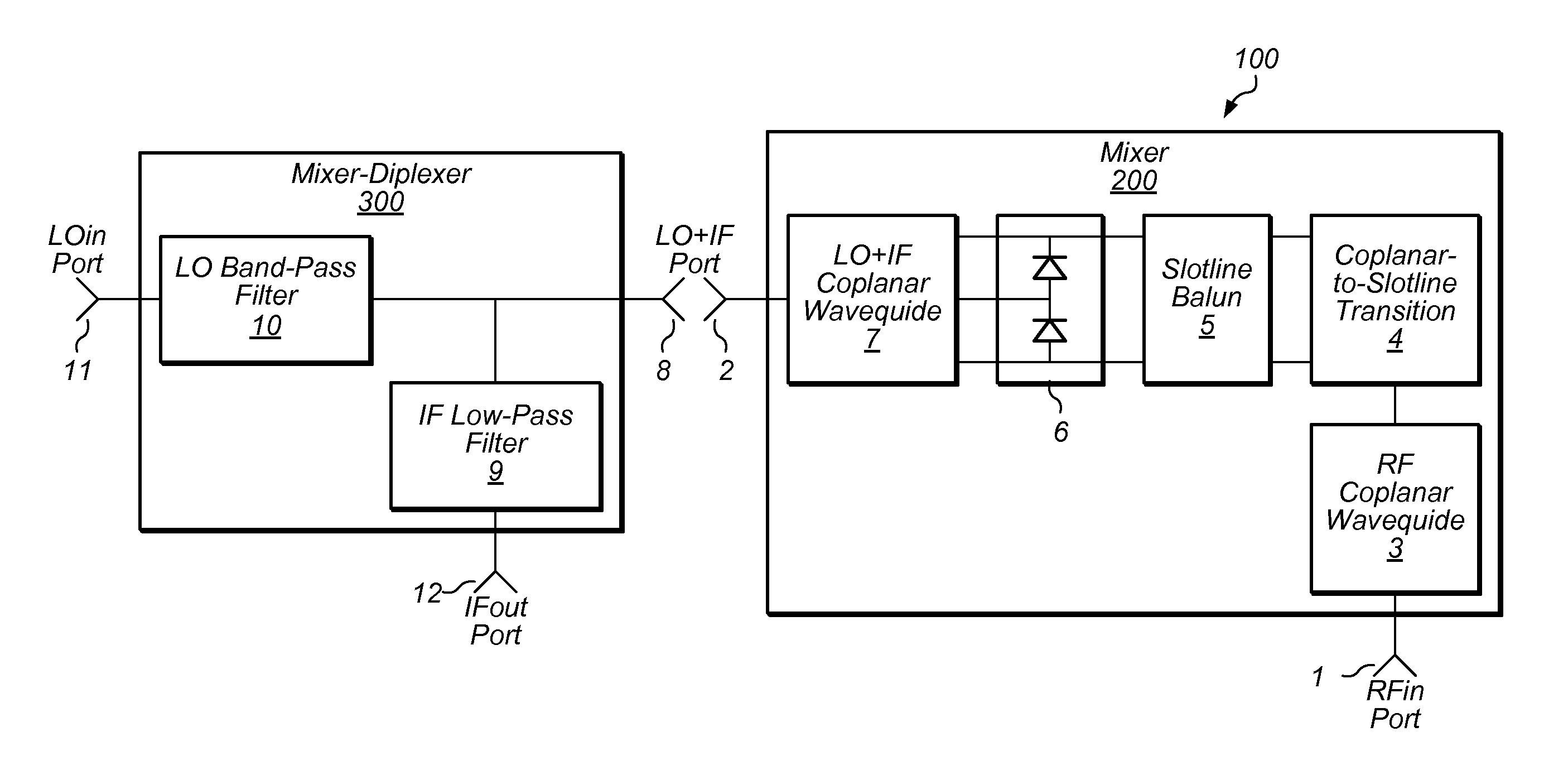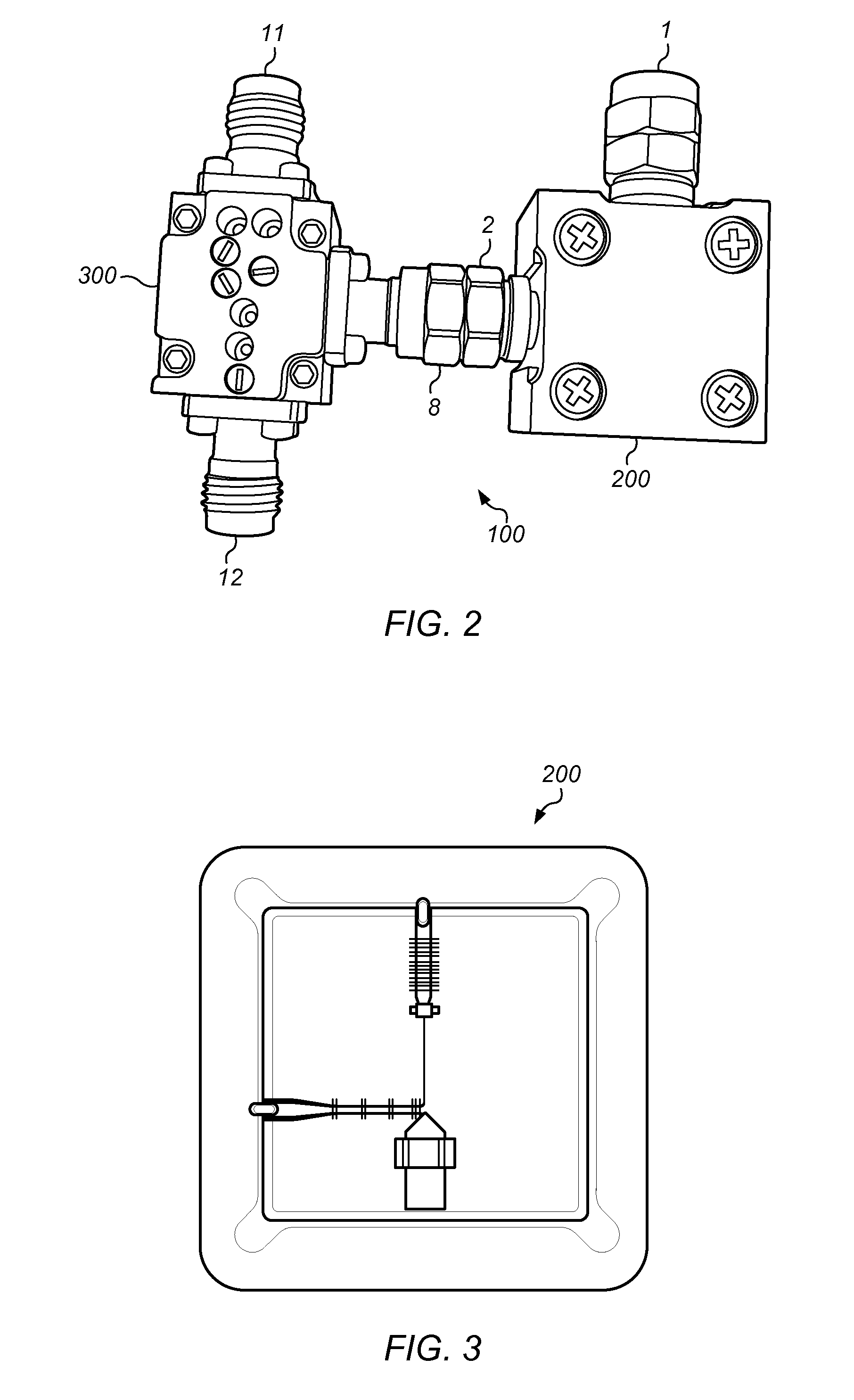Ultra-broadband planar millimeter-wave mixer with multi-octave IF bandwidth
a multi-octave, multi-band technology, applied in the direction of electrically long antennas, antennas, electrical equipment, etc., can solve the problem of inability to decouple the if signal from the mixer core the operational rf frequency range of the waveguide is limited to a frequency octave, and the inability to decouple the if signal in a broadband manner. achieve the effect of eliminating band-limiting planar transition
- Summary
- Abstract
- Description
- Claims
- Application Information
AI Technical Summary
Benefits of technology
Problems solved by technology
Method used
Image
Examples
Embodiment Construction
[0025]FIG. 1 depicts a block diagram depicting an embodiment of a system 100 including a planar mixer 200 with stand-alone mixer-diplexer 300. The mixer module may include a first port 1 and a second port 2. The first port may include a coaxial RF port. The second port may include a coaxial LO+IF port. The first port 1 may couple to RF coplanar waveguide 3 which may convey an RF signal to broadband coplanar-to-slotline transition 4 (e.g., of an open / short type). The RF signal may be conveyed in such a manner that one side 32 of coplanar waveguide 3 is terminated in slotline open 34 reflecting the RF signal. The RF signal may be conveyed such that the other side 33 of coplanar waveguide 3 is transformed into a slotline balun 5 with the signal conductor 14 of coplanar waveguide 3 feeding one of the metal strips 15 of slotline balun and the ground plane metal strips 16-17 of coplanar waveguide feeding the opposite polarity metal strip 18 of slotline balun 5.
[0026]The output of slotline...
PUM
 Login to View More
Login to View More Abstract
Description
Claims
Application Information
 Login to View More
Login to View More - R&D
- Intellectual Property
- Life Sciences
- Materials
- Tech Scout
- Unparalleled Data Quality
- Higher Quality Content
- 60% Fewer Hallucinations
Browse by: Latest US Patents, China's latest patents, Technical Efficacy Thesaurus, Application Domain, Technology Topic, Popular Technical Reports.
© 2025 PatSnap. All rights reserved.Legal|Privacy policy|Modern Slavery Act Transparency Statement|Sitemap|About US| Contact US: help@patsnap.com



